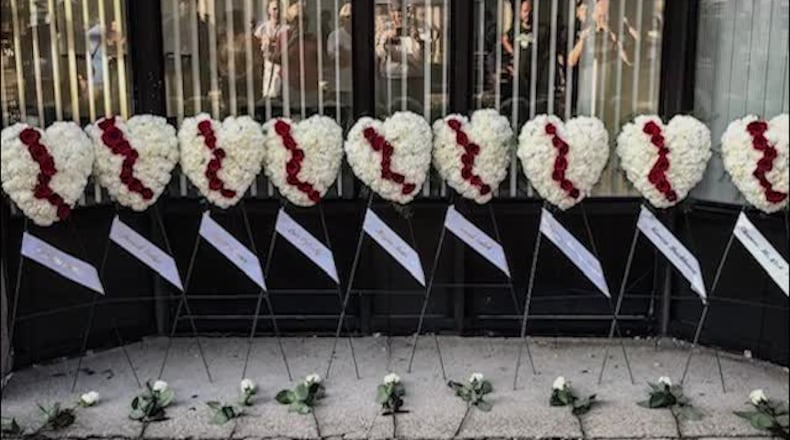Recent focus groups with survivors found that “people stopped in 2020,” caught up in the demands of the COVID-19 pandemic, she said. Now that that appears to be fading, they’re returning to dealing with lingering effects of the mass shooting, Hunt said.
The 2019 shooting was a major focus of this year’s Two Days in May conference for crime-victim advocates. The conference for people who help crime victims navigate the service and compensation system met for the 30th time on Monday and Tuesday in Columbus, after a two-year hiatus due to COVID-19.
Hunt spoke at the conference, detailing the response to the Dayton shooting by multiple agencies, from police on the scene giving victims first aid to the multi-day use of the Dayton Convention Center as an incident command center.
The center became the hub for disseminating information, offering crisis intervention for people affected by the shooting, and helping with paperwork, Hunt said.
Many people wanted to help in the aftermath, but some celebrity visits became a distraction — and some items in the huge pile of donations weren’t helpful, she said.
Hunt suggested people donate to local foundations, or send gift cards or gas cards for victims.
“But the toilet paper and the paper towels were not very helpful at all,” she said.
After the immediate crisis, service workers moved on to recovery.
Bonnie Parish, executive director of the Family Services Association of Dayton, touted the value of collaboration in serving victims’ needs. Her office hosted a coordinated response to the mass shooting to serve the community as a whole, not just people who were directly involved in the shooting, she said.
The Oregon District shooting sparked lots of secondary trauma among people who lived nearby and became afraid to go home; relatives of victims; first responders, counselors and medical personnel; people who watched media coverage and members of the media themselves, Parish said.
That trauma is expressed in many different ways, and there is no one-size-fits-all treatment, she said.
“And you know, another thing: There’s really no end to it. You are never the same,” Parish said.
Dealing with that variety of responses and needs requires cooperation between groups with different specialties, she said.
Trauma recovery centers are a fairly new idea, starting in California, said Stephen Massey, chief operations officer of CitiLookout Trauma Recovery Center in Springfield. Ohio was the second state to adopt them, he said.
“We have eight or nine here,” Massey said. Now there’s an alliance of trauma recovery centers, with more than 40 nationwide, he said.
Massey discussed the myriad needs of trauma victims, including some only distantly related to their specific traumatic event. Workers have to expect that victims may mistrust them at first, so relationship-building is essential, he said.
“Many survivors and victims have been failed, time and time again, by systems,” Massey said.
A public outreach campaign will soon get underway for people still suffering trauma from the Oregon District shooting, as effects of that event reemerge post-pandemic, he said.
Massey said one important new factor is Ohio Senate Bill 36, which passed in October after the Dayton Daily News reported on how Oregon District victims were denied aid. Sponsored by state Sen. Steve Huffman, R-Tipp City, SB 36 revised the compensation rules for crime victims.
Massey said he and other agencies spent a lot of time lobbying for the bill, believing it would be a big help to Oregon District survivors.
“We were all proponents of this bill,” he said.
The Oregon District shooting was a factor in getting legislators to pass SB 36, Attorney General Dave Yost said.
Among other changes, the bill made it less easy to disqualify people for reparations. Based on that, Massey said, several survivors of the Oregon District shooting will be able to reapply for help they’d been denied.
The removal of one previous disqualifier will likely lead to approval of compensation for at least one victim, Yost said.
“We have one woman who had applied for victims’ crime compensation. She was denied because she had Adderall in her system,” he said. “She has since reapplied. It’s my understanding that that application is pending today.”
The attorney general’s Crime Victims Services has paid roughly $50,000 to 24 victims of the Oregon District shooting, according to Yost’s office. Another $50,000 will be distributed to minors pending establishment of guardianship.
Most of that money is to cover “economic loss,” since donations paid medical expenses and an anonymous donor covered funerals, Yost’s office said.
About the Author

